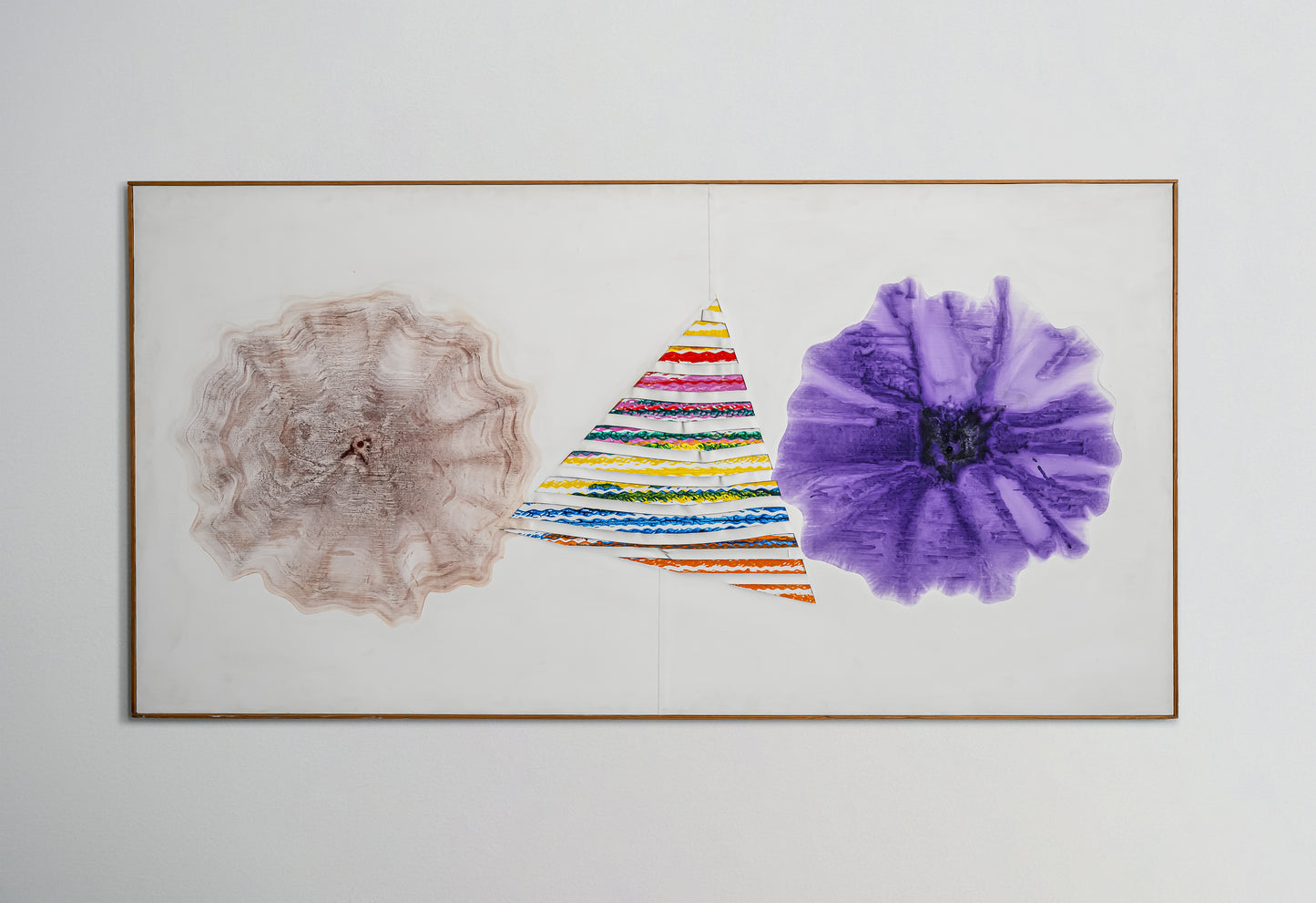BlackBook Presents Store
Pyramid Between Two Dry Lakes
Pyramid Between Two Dry Lakes
James Rosenquist
James Rosenquist, is one of the leading figures of American Pop Art alongside Warhol, Lichtenstein, and Rauschenberg. He used the visual language of commercial and pop culture to challenge and reframe perceptions of reality, time, and the environment. Trained as a billboard painter, he brought a cinematic scale and graphic immediacy to his canvases, using fragmentation and juxtaposition to explore the dizzying effects of modern life. His work, while often associated with consumerism, also carried deep environmental and political undertones, engaging with the rapid shifts in society, technology, and the natural world.
In Pyramid Between Two Dry Lakes (1976), Rosenquist constructs a surreal and enigmatic landscape. A sharply geometric pyramid appears suspended between two arid voids, which refers to evaporated lakes, climate decay, and the spiritual deserts of modernity. The composition feels both futuristic and ancient, artificial and natural. The reflective collage surfaces and razored edged contours recall advertising’s sleek seduction, yet they are deployed here to evoke loss, displacement, and disconnection from the natural world.
Within the context of Mother Nature in the Bardo, this work resonates as a warning and a question: what remains when the symbols of permanence, like a pyramid, are surrounded by emptiness? Rosenquist’s aesthetic draws a collision of beauty, disruption, and metaphor. It mirrors the exhibition’s exploration of a planet caught between collapse and rebirth. Alongside artists like Ai Weiwei, Katz, and Takis, Rosenquist invites us to re-examine not only what we see, but what we’ve stopped seeing: the vanishing landscapes, the cultural amnesia, and the fragile balance we have disrupted.
Rosenquist’s work is held in the world’s most prestigious institutions, including the Museum of Modern Art (MoMA), the Guggenheim Museum, the Whitney Museum, and the Centre Pompidou. His legacy remains vital today for the way it entwines politics, poetry, and the visual spectacle of American life.
Provenance
Galerie Leo Castelli, New York
Annon. Sale Sotheby's New York, 27 February, 1990
Private Collection, Europe
Literature/Press
James Rosenquist and David Dalton, Painting Below Zero: Notes on a Life in Art, Alfred A. Knopf, New York, 2009, mentioned p.218


